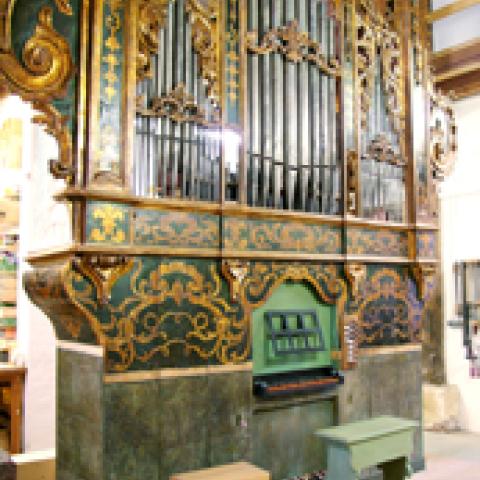2009 International Organ and Clavichord Academy
Artistic Director: M° Edoardo Bellotti
SMARANO 2009
Saturday 25 July – Tuesday 4 August
“Ars variandi”
The “variation” at the baroque keyboards
The second step toward Pasquini’s anniversary 2010, will explore a typical aspect of the baroque culture, the art of variation. Not only in music, but also in literature as well as architecture and fine arts “ars variandi” was an essential element of XVIIth Century aesthetic. Through pages of Pasquini, Pachelbel and other contemporary composers, participant could understand the idea of “variation” and its development in the different European regions as well as improve the use of it both in improvisation and composition.
The Academy 2009 will deal with the following :
Masterclasses:
William Porter - Edoardo Bellotti: The art of variation: composing and improvising partitas, ciacconas and passacaglia
Joel Speerstra: Pachelbel Hexachordum Apollinis and Clavichord technique
Armando Carideo: Historical Sources for Italian repertoire
Francesco Cera: From Frescobaldi to Pasquini (Toccate, Passacaglie, Partite)
Massimiliano Guido: Ancor che col partire: Madrigal and organ music Gabrieli, Frescobaldi, Majone, Strozzi
Pieter Dirksen: Boehm and the Thuringian Organ Partita
Hans Davidsson: Bach: Organ Partitas
Seminars and Workshops:
William Dongois: The Art of Diminution in the XVIIth century
Massimiliano Guido: Gli affetti cantabili: Madrigal and Keyboard Music
Roberto Fresco: Juan Cabanilles and the Spanish Baroque Organ Music
Ulrike Heider: Gregorian Chant: The Mass. Choir rehearsal
Group lessons will take place every day with a minimum of 3 hours of individual lesson and/or study. The maximum number of active participants is 20. The number of auditors is unlimited.
Accommodation in double rooms, it will be booked by the staff of the association. Please adivse at time of application if you want a single room accommodation!
The closing date for the Academy application has been extended to March 31, 2009.
Website: www.eccher.it.gb/



